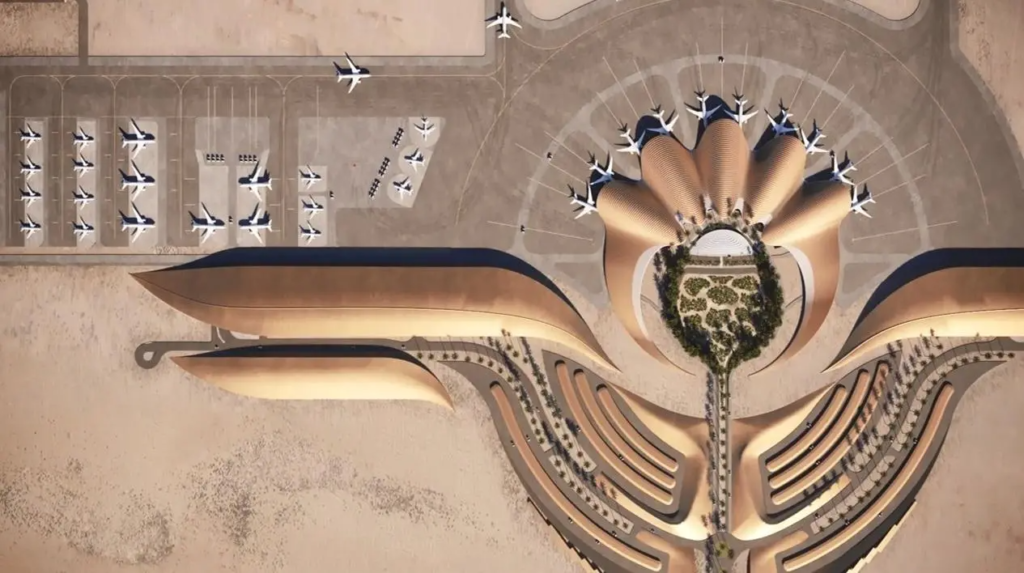Red Sea Airport, a new international gateway, has officially opened, marking a major milestone in boosting tourism, trade, and regional connectivity. Located along the picturesque Red Sea coast, the airport is part of Saudi Arabia’s ambitious Vision 2030 plan to diversify its economy by investing in tourism and infrastructure. The airport aims to provide a world-class travel experience while promoting sustainability and environmental conservation
A Strategic Location

The Red Sea Airport is strategically located to serve both domestic and international travelers. It is situated in the Red Sea Global (RSG) development, a mega-tourism project covering several luxury resorts and islands. The airport is expected to cater to millions of tourists visiting the Red Sea region, making it a key entry point for visitors from around the world.
With direct flights planned from major cities such as London, Dubai, and Riyadh, the airport will make travel to this region more convenient. Additionally, its location near the Suez Canal and key shipping routes positions it as an important hub for trade and logistics.
State-of-the-Art Infrastructure
The Red Sea Airport features modern facilities designed to enhance passenger experience. It has spacious terminals, efficient immigration and security systems, and a seamless check-in process. The design incorporates traditional Arabian architecture with contemporary elements, creating a unique and welcoming atmosphere.
The airport also prioritizes environmental sustainability. Solar panels, energy-efficient buildings, and water conservation systems have been integrated to minimize its carbon footprint. Additionally, electric and hybrid ground vehicles are used to reduce emissions within the airport premises.
Boosting Tourism in the Region
The launch of the Red Sea Airport is expected to play a crucial role in boosting tourism. The Red Sea is famous for its stunning coral reefs, clear blue waters, and luxury resorts. The airport will provide easier access to attractions such as scuba diving, yachting, and cultural heritage sites.
Saudi Arabia has been making efforts to attract more international tourists by easing visa regulations and developing world-class tourism infrastructure. With the new airport, the region is set to become a global tourism hotspot, rivaling destinations like the Maldives and Seychelles.
Economic Benefits and Job Creation
The airport is not just about tourism; it also brings significant economic benefits. It is expected to create thousands of jobs in aviation, hospitality, and retail sectors. The local communities will benefit from increased business opportunities, as more tourists and travelers mean higher demand for services such as transportation, food, and accommodation.
Moreover, the airport will enhance Saudi Arabia’s logistics and cargo capabilities, helping businesses transport goods efficiently. This is expected to boost the country’s trade sector, particularly exports related to agriculture, fisheries, and high-end products.
Innovative Passenger Experience
The Red Sea Airport is designed to offer a seamless and luxurious passenger experience. Advanced technology such as biometric scanning, AI-driven customer service, and automated baggage handling systems will ensure smooth operations. The airport also offers high-end lounges, shopping centers, and fine dining restaurants to make the travel experience enjoyable.
Travelers will also have access to luxury services, including private jet terminals and VIP concierge services. Whether traveling for leisure or business, passengers can expect a premium experience at this new airport.
Commitment to Sustainability
One of the standout features of the Red Sea Airport is its commitment to sustainability. The airport has been built with eco-friendly materials and operates using renewable energy sources. Measures such as reduced water consumption, waste recycling, and minimal land disruption have been adopted to preserve the natural beauty of the surrounding region.
The airport also aims to be a model for sustainable tourism. Efforts are being made to limit over-tourism and protect the delicate marine ecosystems of the Red Sea. Eco-friendly transport options, such as electric shuttle buses and bicycles, will be available for visitors traveling within the region.
Future Expansion Plans
While the airport has just opened, there are already plans for expansion. Over the next few years, additional runways, terminals, and support facilities will be developed to accommodate growing passenger demand. The goal is to make the Red Sea Airport one of the most efficient and well-connected travel hubs in the world.
Authorities are also working on partnerships with international airlines to increase connectivity. This will ensure that the Red Sea region remains accessible to travelers from all parts of the world.
Conclusion
The opening of the Red Sea Airport is a significant step towards transforming the region into a leading global tourism and trade hub. With world-class infrastructure, a strong commitment to sustainability, and a focus on delivering exceptional passenger experiences, the airport is set to bring economic growth and new opportunities to Saudi Arabia. Whether for business, leisure, or trade, the Red Sea Airport is expected to become a vital gateway for travelers and businesses worldwide.
Do follow on Instagram
Al Jomaih Automotive Company Expands with New Strategic Moves



